Introduction
- Globalization as the focus behind the establishment of free trade;
- Free trade = cheaper goods for services;
- Protectionism = more expensive products but protected industries.
As the international trade becomes more convenient due to globalization, a new domestic issue has arisen within many countries involving the implementation of free trade or protectionist practices when it comes to their local markets. Many argue that free trade would enable local consumers access to cheaper goods while counter arguments centered on protectionism focus on the protection of local markets from cheap imports. At the center of these issues is the necessity of governments to balance the needs of their citizens with the necessity of being competitive by having a more open market through free trade practices.
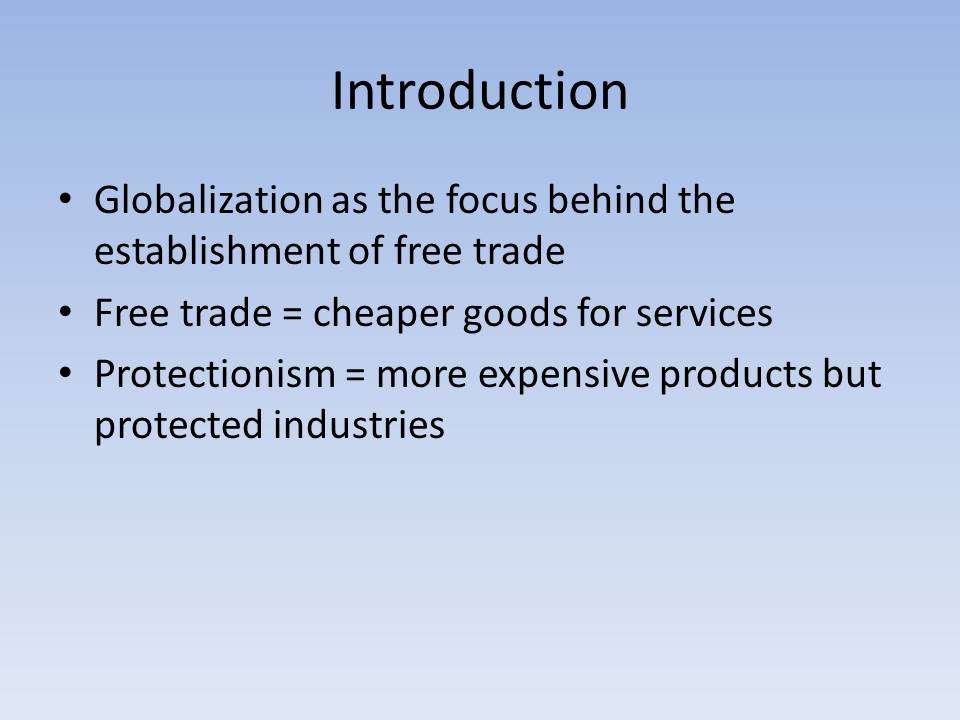
Root Cause of the Issue
- Necessity of Protecting local industries versus Cheaper Prices for consumers (Martin, 2010).
- Tariffs and taxes slow down trade and make it more expensive (Martin, 2010).
The root cause of the problem is the desire for local industries to be protected from an influx of cheap foreign imports versus local consumers benefiting from cheaper products. It should also be noted that the implementation of protectionist measures regarding imports from certain countries also results in these countries implementing their own form of protection as well. The end result is the creation of numerous tariffs and trade restrictions which make the flow of goods and services more expensive and difficult.
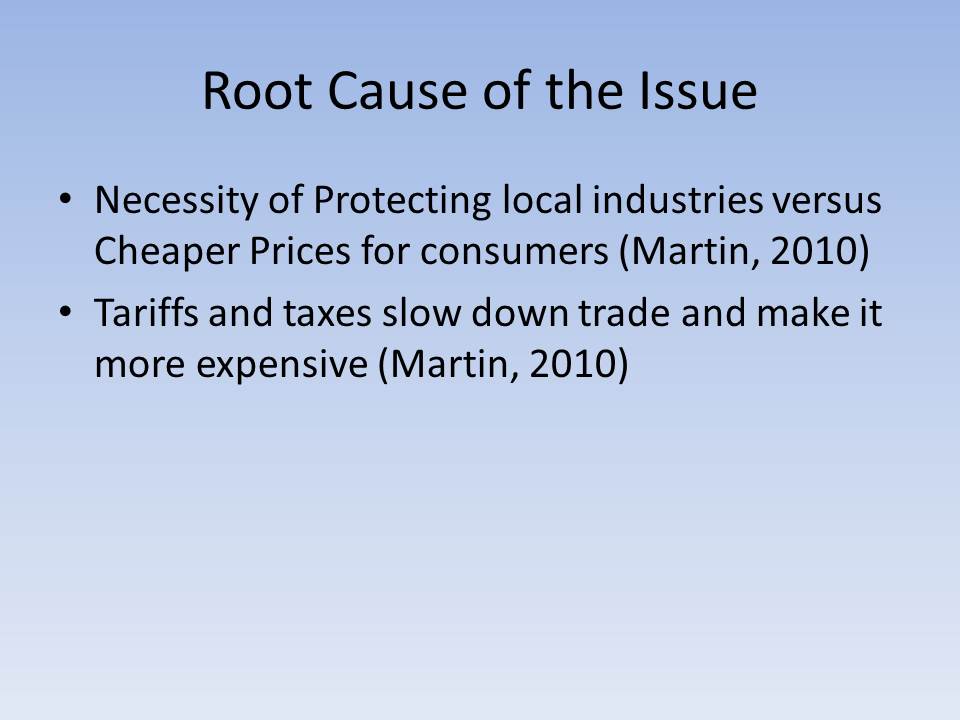
Advantages of Free Trade
- Cheaper goods and services;
- Access to more markets;
- Easier time to transport goods.
The advantage of free trade is that this allows markets from different countries to freely trade with one another without restrictive in the form of significant tariffs, taxes and other restrictions. This makes the prices of particular goods and services far cheaper for local consumers and results in them being able to buy more for less. Aside from this, under a free trade agreement countries would have greater access to the local markets of other countries resulting in a greater chance for profit.
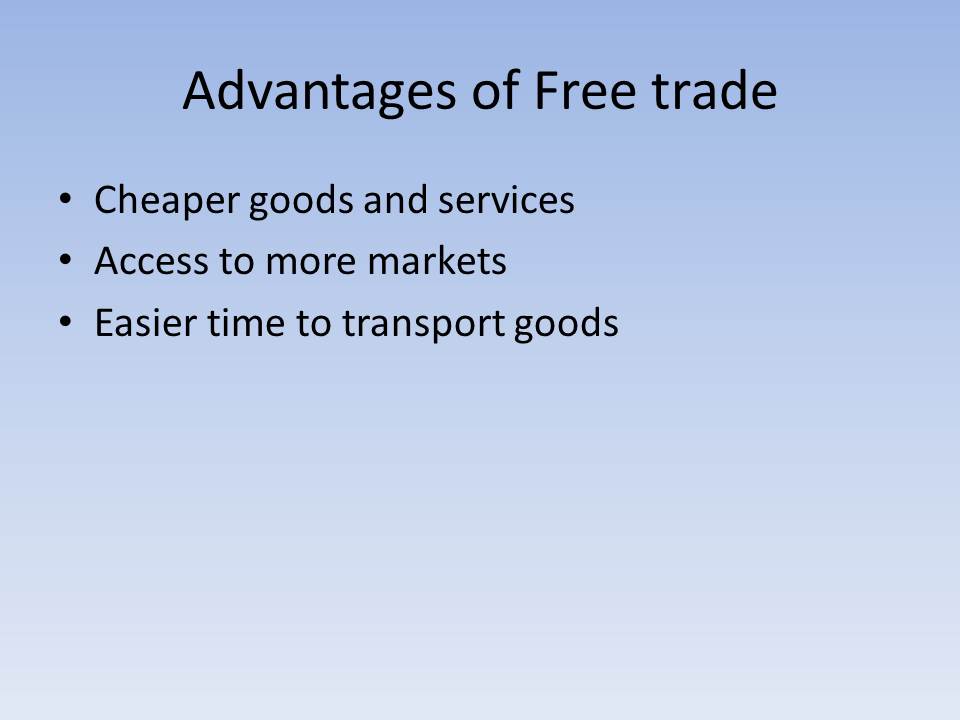
Disadvantages of Free Trade
- Creates vulnerability in local markets;
- Overwhelmed local industries;
- Product Dumping.
The main disadvantage of free trade is possibility of product dumping wherein cheap foreign imports would overwhelm locally made products resulting in the closure of those particular industries (Martin, 2010) . This is one of the main fears associated with the creation of free trade agreements and why protectionist measures are often put in place to prevent this.
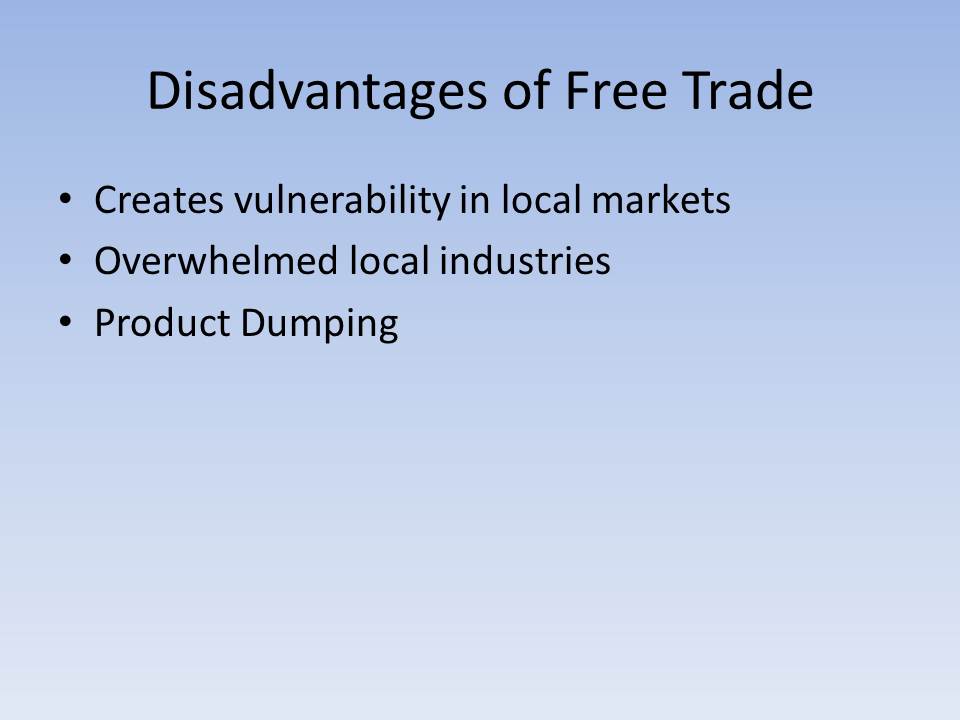
Advantages of Protectionism
- Protected local industries;
- Ensures their continued existence.
The advantage of protectionism is that this allows local industries to grow and develop without adverse competition from other markets that have a competitive advantage over them. Protectionism, in essence, ensures the continued existence of these industries which leads to sustaining the jobs that these industries create.
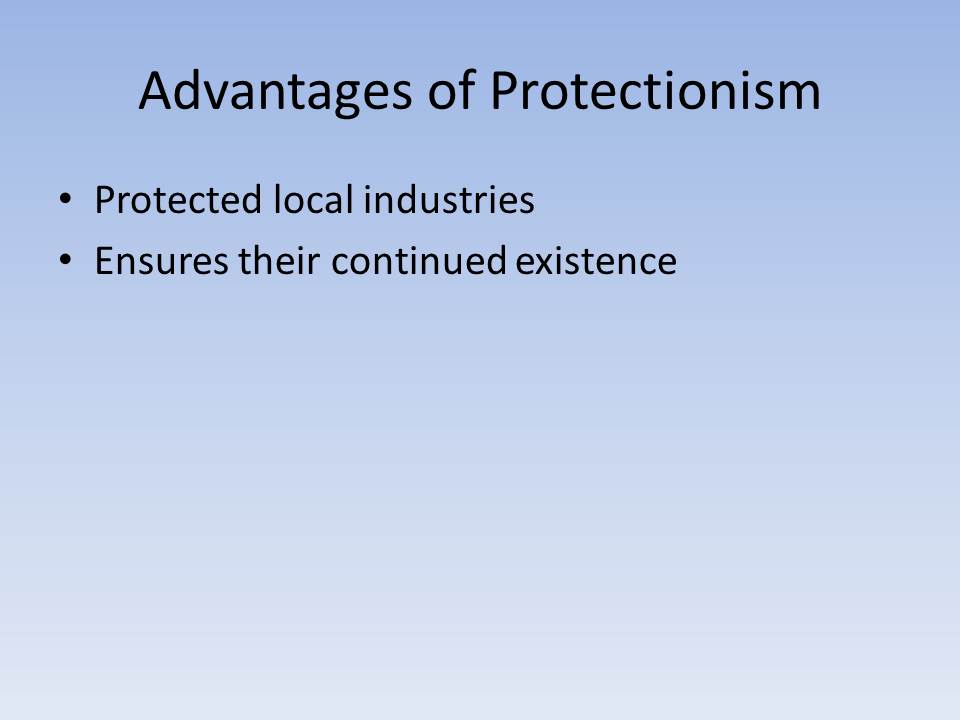
Disadvantages of Protectionism
- More expensive products;
- Other countries implement their own protectionist measures.
The disadvantage of protectionism is that it often creates a “quid pro quo” mechanism wherein protectionist measures put in place by one country are emulated by other countries. This restricts international trade and makes the flow of goods and services far more expensive for local consumers.
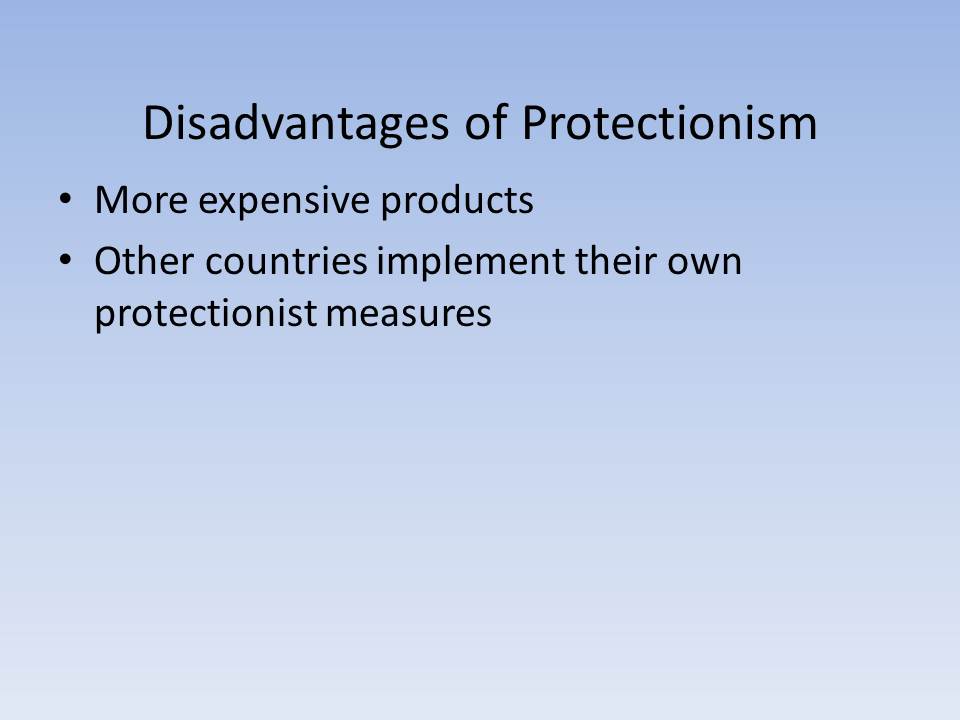
Opinion
- Limited free trade should be implemented;
- New markets can be implemented with free trade.
It is my opinion that while it is important to ensure the survival of local industries, the establishment of free trade protocols is necessary in order to become competitive in the international market. Local industries need to be able to penetrate new markets and this can only be done if the restrictions that prevent them from doing so are removed.
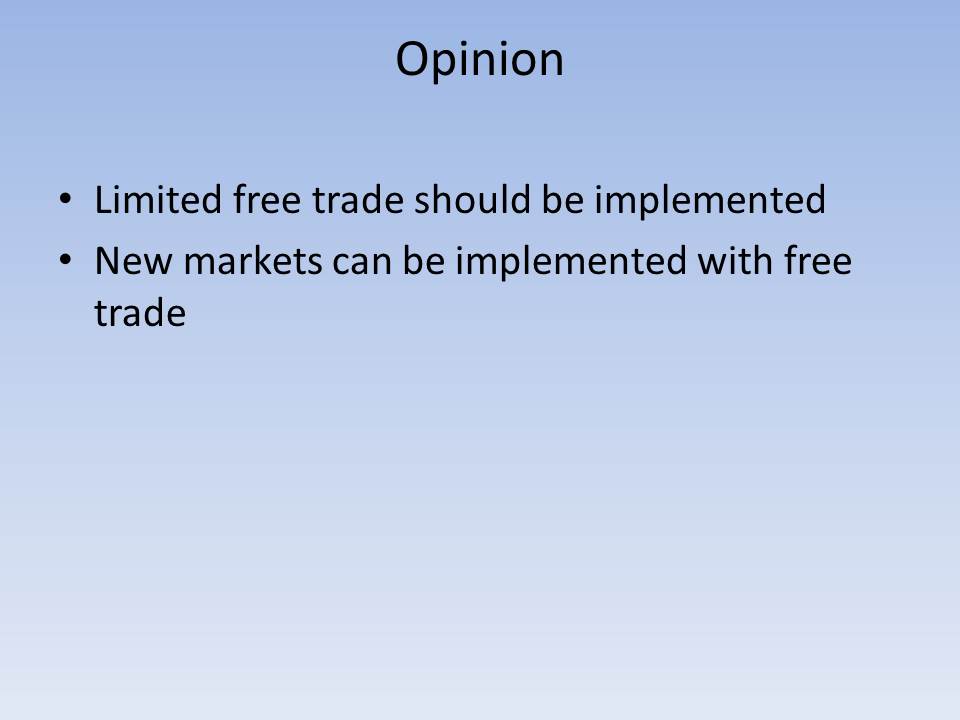
Solution
When examining the case, it is apparent that the best solution would be to establish some form of limited protectionism for vulnerable industries while letting most of a country’s markets be open to free trade. By doing so this helps to protect the industries that are vulnerable while at the same time allowing the rest of the population to take advantage of cheaper prices.
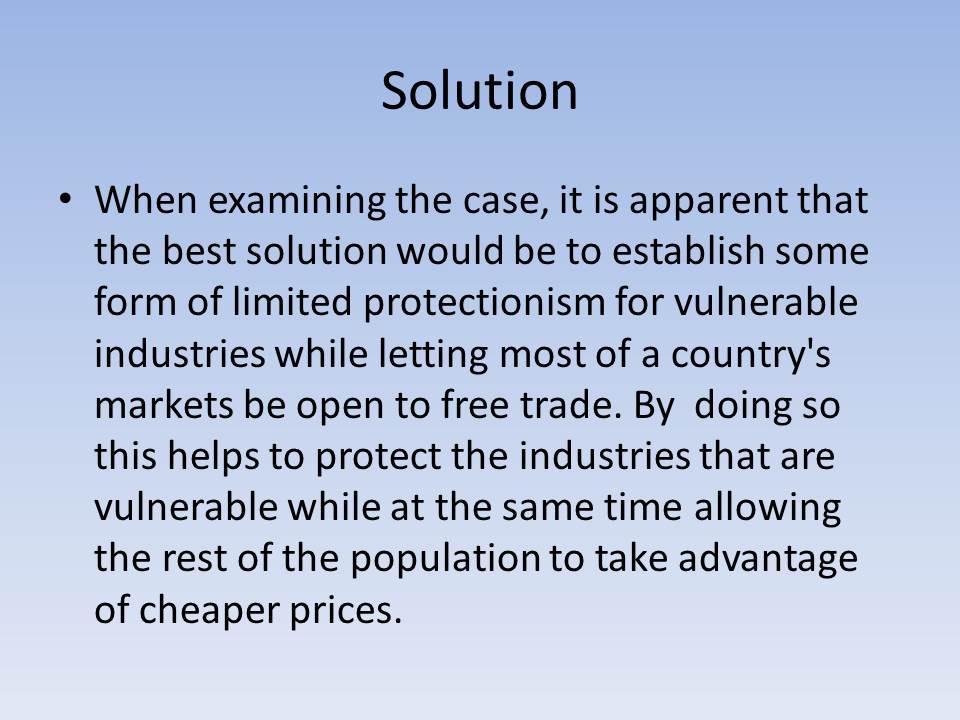
Reference List
Martin, T. L. (2010). Arthur Farquhar on Economic Delusions: An Examination of the Case for Protection. American Journal Of Economics & Sociology, 69(3), 1107-1124.